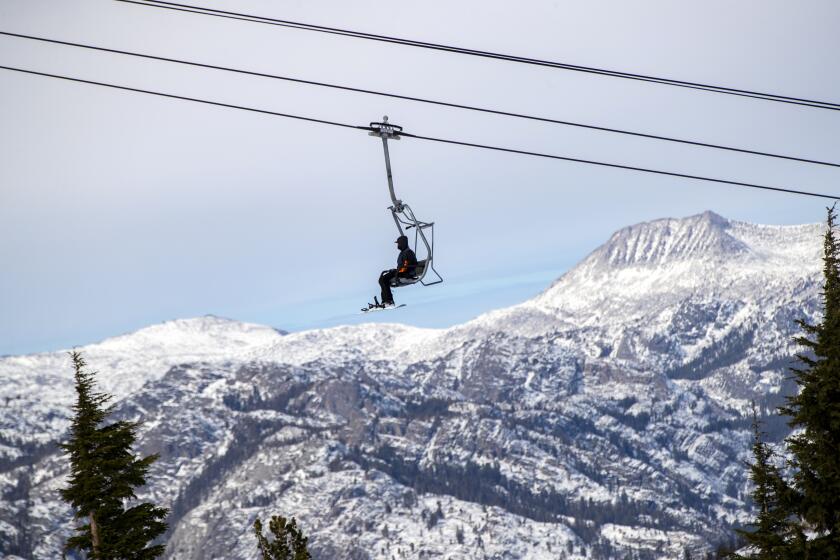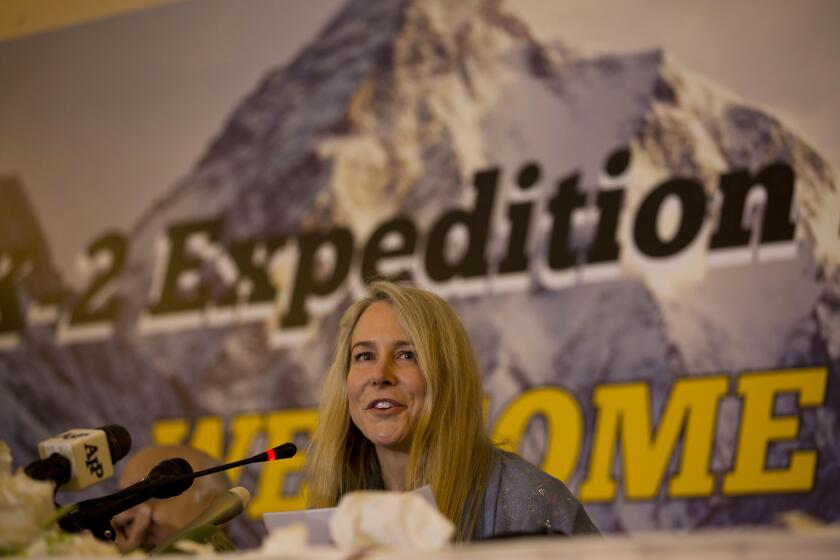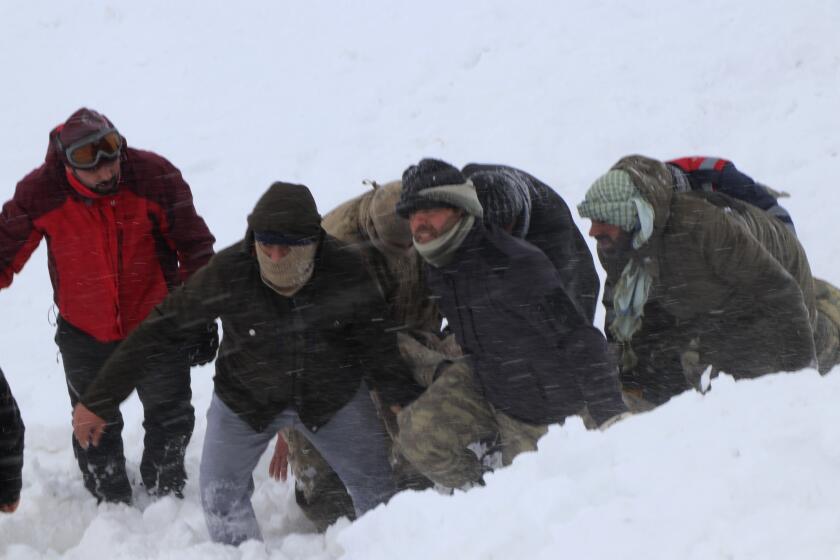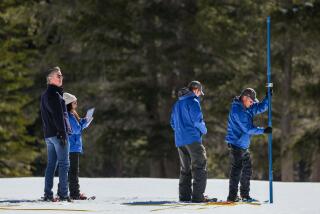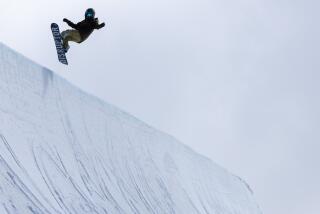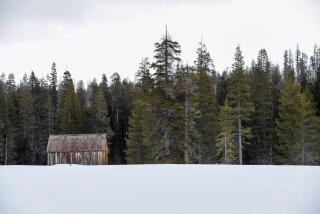Deadly avalanche season imperils skiers, snowboarders: ‘Everywhere is sketch’
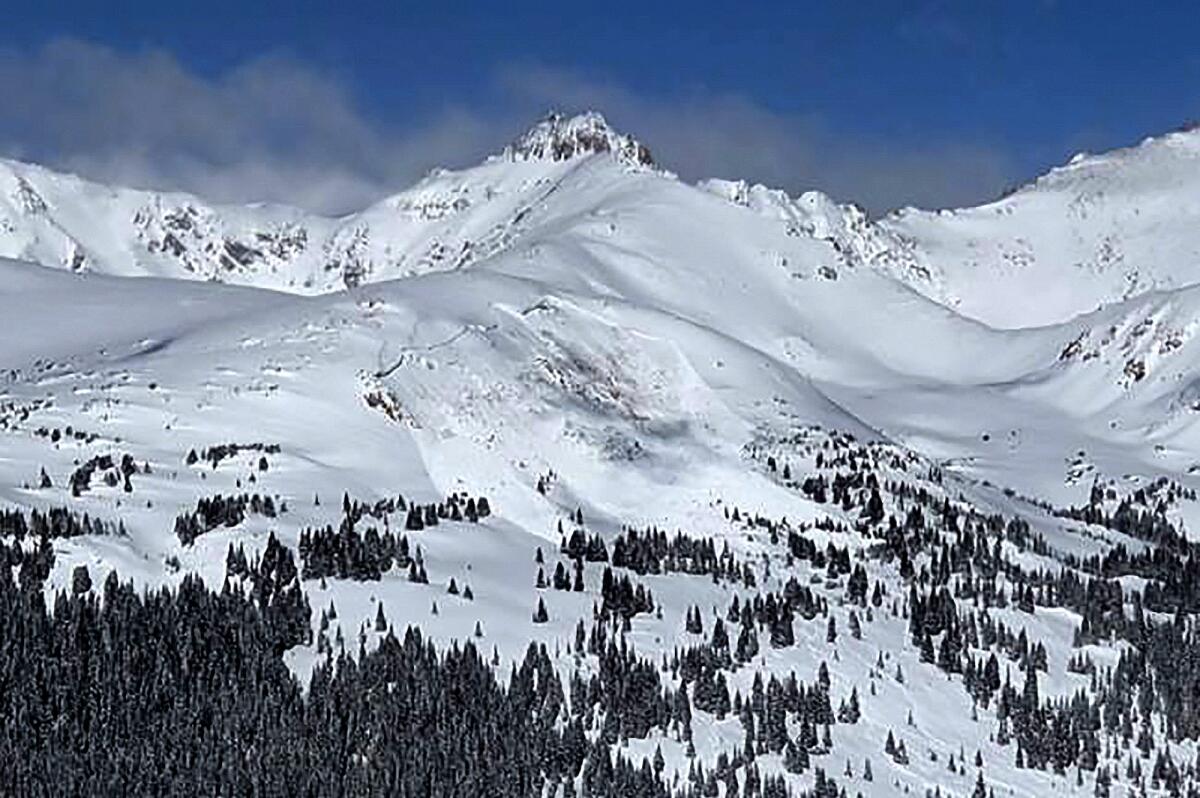
- Share via
MAMMOTH MOUNTAIN — The mountains are calling, but the siren song has been especially dangerous this year.
From Alaska to Wyoming, dozens of skiers, snowboarders and other outdoor enthusiasts who see the backcountry as a refuge have been caught in barreling waves of snow and ice in one of the deadliest avalanche seasons in modern history.
For the record:
10:50 a.m. March 8, 2021An earlier version of this article stated avalanche victims can asphyxiate from breathing in carbon monoxide. They can die by breathing in exhaled carbon dioxide.
On Feb. 27, four snowmobilers were caught in an icy deluge on Tiger Peak, north of a ghost town in Idaho. Two riders were buried, and one died while trapped under the snow. The week before, two other snowmobilers died in back-to-back avalanches over two days.
A month ago, four experienced skiers were killed and four others were injured when an avalanche pummeled a popular backcountry skiing area near Salt Lake City.
From Jan. 30 to Feb. 6, 15 people died in avalanches in the U.S., including a skier in California, near the Oregon border. That’s the most deaths in a week since 1910, when 96 people were killed in a massive avalanche on a mountain pass in Washington state.
News of the danger has spread throughout the adventure community.
“Everywhere is sketch,” said Matt Wehrle, 22, who was hitting the slopes near a popular backcountry trailhead leading to the Sherwin Range at Mammoth Mountain last month. “My Instagram feed is sometimes just so heavy, seeing all the accidents.”
A skier from Oceanside died this week after he was discovered upside down and unconscious in deep snow on Mammoth Mountain, authorities said.
Avalanches have killed 33 people since Oct. 1. The “avalanche year” runs through September.
This year’s toll is on pace to surpass the modern record of 36 deaths in both the 2007-08 and 2009-10 seasons, according to experts at the Colorado Avalanche Information Center, a state agency that tracks national avalanche fatalities.
“There’s an unfortunate but reasonable chance that we will exceed that record,” said Ethan Greene, the avalanche center’s director.
Experts say the uptick in avalanches has been fueled by weather conditions that create a weak bottom to the snowpack, which then becomes prone to slides.
Early-season snow followed by a long dry spell in much of the Western U.S. created a persistent weak layer in the snowpack. Those who know their snow describe the consistency as “sugary.” Subsequent storms then dumped new snow on top of that unstable base. During and immediately after a storm is typically peak avalanche risk.
An explosion of activity in remote areas by people seeking socially distanced outdoor activities during the COVID-19 pandemic has exacerbated the situation, experts say.
Though most avalanches are triggered by weather events, the current conditions make the mountainous snow particularly sensitive to human activity, Greene said. Skiing, snowboarding, snowmobiling, snowshoeing and other activities can trigger a slide. Avalanches typically occur in the backcountry, where snow that isn’t groomed by resorts or other private entities can be more unpredictable — and help is farther away.
The buddy system in backcountry sporting is an imperative life-or-death support structure, said Nick Meyers, lead forecaster for California’s Mt. Shasta Avalanche Center, a part of the U.S. Forest Service.
“If you and I are out skiing, you are the rescue team if I get buried,” he said. “The only way that I’m going to survive is if you rescue me.”
K2 is the world’s second highest peak at 28,251 feet, and one of the deadliest, especially in winter. Hope wanes for a recent group of mountaineers.
Though it’s hard to pinpoint the exact number of vacationers to the backcountry, several avalanche forecasters said there’s been an undeniable surge in the last year. Trailheads that were once sparse are teeming with visitors. Avalanche safety classes are filled.
Wehrle’s brother, Tyler, who was trying out split-boarding — a snowboard that splits into two pieces — when the two visited Mammoth last month from San Clemente, also signed up for an avalanche-preparedness class. The 29-year-old said one of his friends wouldn’t trek with him if he didn’t.
Avalanche forecasters know conditions are ripe for disaster and have been sounding the alarm all season, said Karl Birkeland, director of the U.S. Forest Service’s National Avalanche Center.
“What was unique, that we don’t see that often, was just the widespread nature of the unstable conditions, rather than them just being centered in a single location,” said Birkeland, who is based in Bozeman, Mont.
Wednesday’s avalanche in Turkey increased the overall death toll from the disaster to 38. An avalanche also struck late Tuesday.
Colorado is known for having a persistent weak layer of snow year after year, Birkeland said. But this year, it has been much worse, he said, and similar conditions are plaguing places “where we typically don’t have layers like that,” including Montana, Wyoming, Utah and parts of California.
“Most people are seeing a different version of the same story,” Greene said of the dangerous snow conditions.
In addition to fatalities in Utah, Colorado and Idaho, there have been deaths in Alaska, Washington, Wyoming, New Hampshire and Nevada.
California reported a fatality a month ago. Backcountry skier Brook Golling and snowboarder Ben Koerber were caught in an avalanche Feb. 3 near Etna Summit, in the mountains of western Siskiyou County, according to an incident report prepared by the Mt. Shasta Avalanche Center. Golling, 35, was pinned against a tree and buried beneath the snow, while Koerber, 37, was swept farther down the slope.
Both men, from nearby Ashland, Ore., were experienced winter-sport enthusiasts familiar with the area and were carrying avalanche rescue gear, including a transceiver device, according to the avalanche center report.
Once Koerber righted himself, he began a transceiver search to find Golling, but the device malfunctioned. He trekked to where he thought Golling went under and found an exposed ski pole, which led to his buried friend, the report said.
Koerber performed CPR on Golling for more than an hour but couldn’t revive him.
The skier was probably under the snow for 25 to 30 minutes before Koerber found him, well beyond the typical 15-minute window of rescue, said Mt. Shasta’s Meyers, who was called in to help recover Golling’s body.
A person can suffer brain damage in four to six minutes when buried in an avalanche with his or her airway blocked, Greene told The Times last year after a 34-year-old skier was killed and another man was seriously injured in an avalanche at Alpine Meadows ski resort, west of Lake Tahoe.
Avalanche victims can asphyxiate from breathing in carbon dioxide from their own exhalation while buried beneath the snow. Of those killed in avalanches in the U.S., Greene said 25% die from trauma and nearly 75% die from asphyxiation.
Last month’s Siskiyou County fatality was the first tied to an avalanche there in more than 30 years.
About a week after that deadly encounter, more than 30 avalanches were recorded in the Lake Tahoe area over a three-day period, said Brandon Schwartz, the lead forecaster at the Sierra Avalanche Center.
Kyle Johnston, 34, said he was skiing with his cousin in the Blue Lakes area when the hillside released not once, but twice. His cousin skied to safety, but the second release sent Johnston hurtling over a 100-foot cliff. He remembers seeing spider cracks rapidly spreading throughout the more than foot-deep snow before it broke off in chunks around him.
His cousin Josh Daiek, a professional skier, saw Johnston’s hand sticking out of the snow and quickly dug him out. His body was twisted and his lips were blue, but he took a huge gasp of air once the snow was cleared from his mouth. Johnston was airlifted to a hospital in Reno with serious injuries, including a collapsed lung, four broken ribs, five fractured vertebrae and brain bleeding. He spent 11 days there before being released.
Both Johnston and Daiek are experienced backcountry skiers. They analyzed the terrain and made a calculation they could clear the area. But “it’s the mountains, it’s Mother Nature. There’s a lot of variables,” said Johnston, who credits his cousin with saving his life.
Once caught in the path of an avalanche — even a small one — “you become powerless pretty quick,” said Josh Feinberg, the lead forecaster for the Eastern Sierra Avalanche Center.
He knows from personal experience.
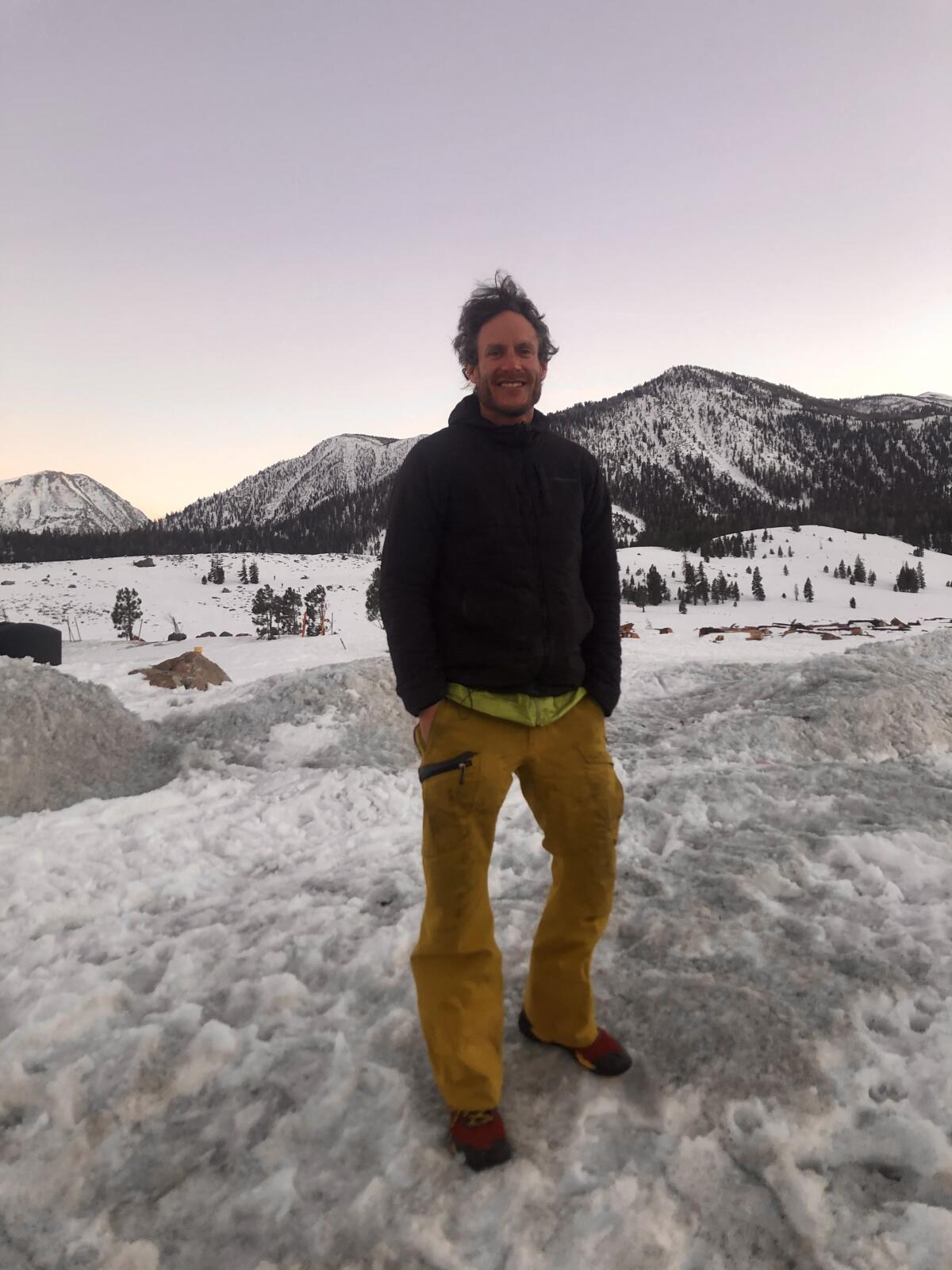
One minute, he and his friends were skiing uphill — a difficult exercise that involves placing “skins” on backcountry skis so they can be used to climb upward without sliding — and the next, the mountaintop in Bridgeport, Calif., was rumbling toward them, pushed by forceful winds.
Feinberg, then a member of the nearby Mammoth Mountain Ski Patrol, hit a tree and the world turned black, leaving him unconscious and buried beneath a frozen blanket in the Eastern Sierra backcountry.
He was lucky. His buddy and fellow ski patroller CJ Pearson was able to hang on to a tree as the 2006 avalanche flowed past him, and he found Feinberg in time to dig him out of an icy grave. He clawed snow out of his mouth to clear his airway. Pearson’s girlfriend, Johanna Carlsson, was swept 600 vertical feet downhill, slamming into rocks and trees. She didn’t survive.
Fifteen years after Feinberg’s near-death experience, he said he still understands the allure of the mountains. Not long before the avalanche, he and Pearson were “very ambitious to ski big mountains and big lines.” But the tragedy reshaped his perspective.
“The biggest thing is how important it is to know when to turn around,” he said. “And to be proud of yourself for turning around — to realize that it’s a much harder decision than to actually physically push yourself farther up this mountain.”
More to Read
Sign up for Essential California
The most important California stories and recommendations in your inbox every morning.
You may occasionally receive promotional content from the Los Angeles Times.

